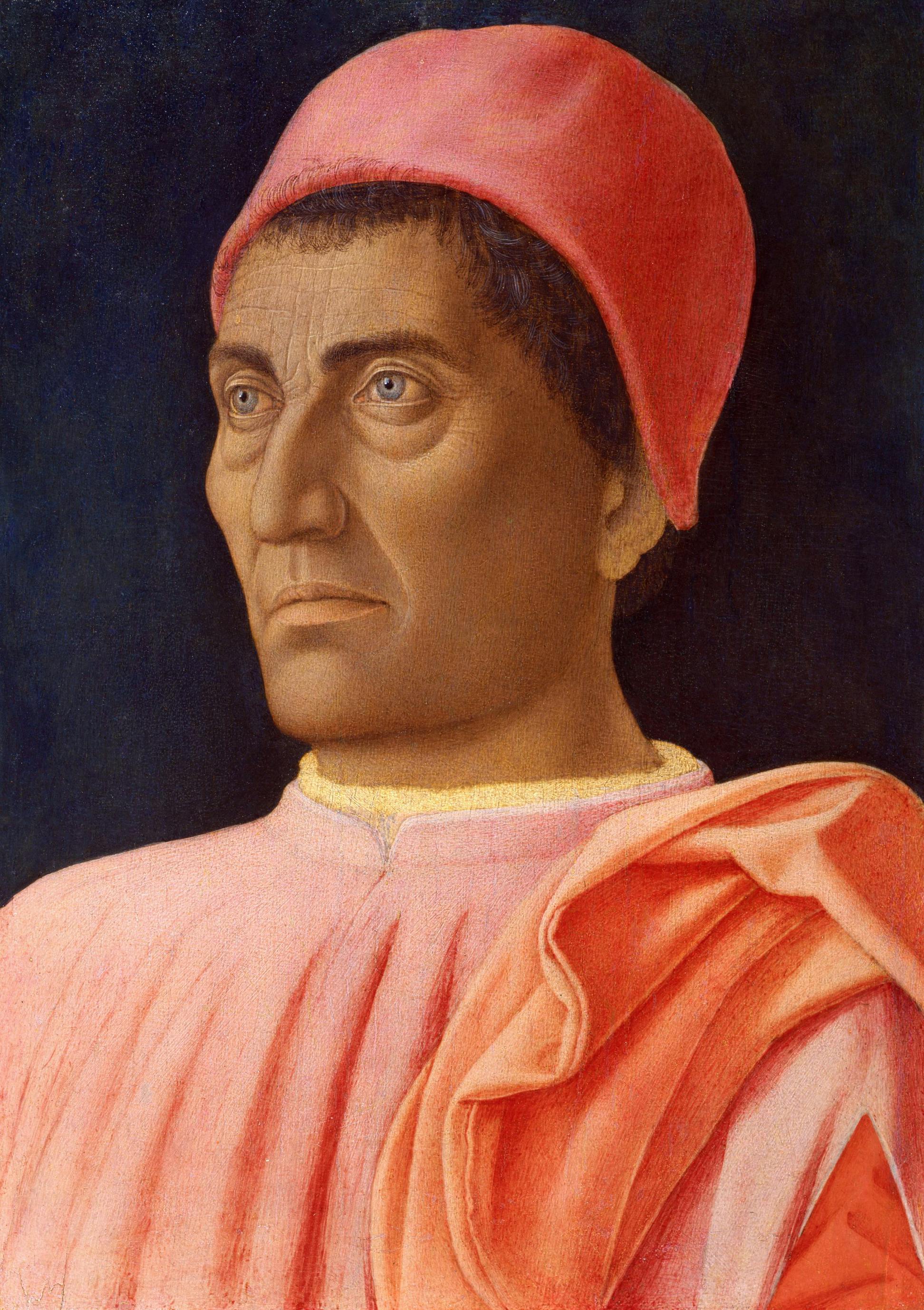Portrait of a Prelate (Carlo de' Medici?)
Andrea Mantegna (Isola di Carturo (PD) 1431 - Mantua 1506)
Against a black background stands the figure of a middle-aged man with dark hair and blue eyes. He is wearing a red robe, similar to the biretta covering his hair, which identifies him as an apostolic prothonotary, an important ecclesiastical office.
Based on a reproduction of the portrait from Martino Rota's Medici family tree (ca. 1590; Vienna, Albertina), the prelate has been identified as Carlo de' Medici (ca. 1428 - 1492), the natural son of Cosimo the Elder, born from a relationship with a Circassian woman, who was brought to Florence by Cosimo as a slave after his return from exile in 1435. After being raised in the Medici household, Carlo embarked on the ecclesiastical career. In 1450, he became prothonotary and later provost of the Cathedral of Saint Stephen in Prato, in whose apse, according to Giorgio Vasari, another portrait of the prelate was allegedly hidden among the frescoes painted by Filippo Lippi. However, the visible physiognomic difference between the portrait painted by Filippo Lippi and the one in the Uffizi has sometimes cast doubt as to the correct identification of this character.
On the other hand, studies in recent decades have agreed on the attribution to Andrea Mantegna, of whom the Uffizi painting is a rare example of portrait produced by the Paduan master. The foreshortened position of the figure and the dark, uniform background have similarities with the Flemish models, but differently from the meticulous naturalism of the Nordic masters, Mantegna gives monumentality and austere solemnity to the representation, as if he wanted to transfer the moral qualities of the subject into his physical aspect. The noticeable plasticity of the face evokes references to ancient portrait busts from the Roman era and to the portraiture created by Renaissance sculptors, which were based on the same models.
The history of the portrait is unknown, but it must have been in the Medici collection already at the time of Martino Rota's engraving (ca. 1590).
It has been preserved at the Uffizi since 1925.
K. Christiansen, in Andrea Mantegna, a cura di J. Martineau, Londra- New York 1992, pp. 337-339; G. Agosti, Su Mantegna, I. La storia dell’arte libera la testa, Milano 2005, p. 136; S. Bandera, Andrea Mantegna. Rivivere l'antico, costruire il moderno, Torino, 2019, p. 136
